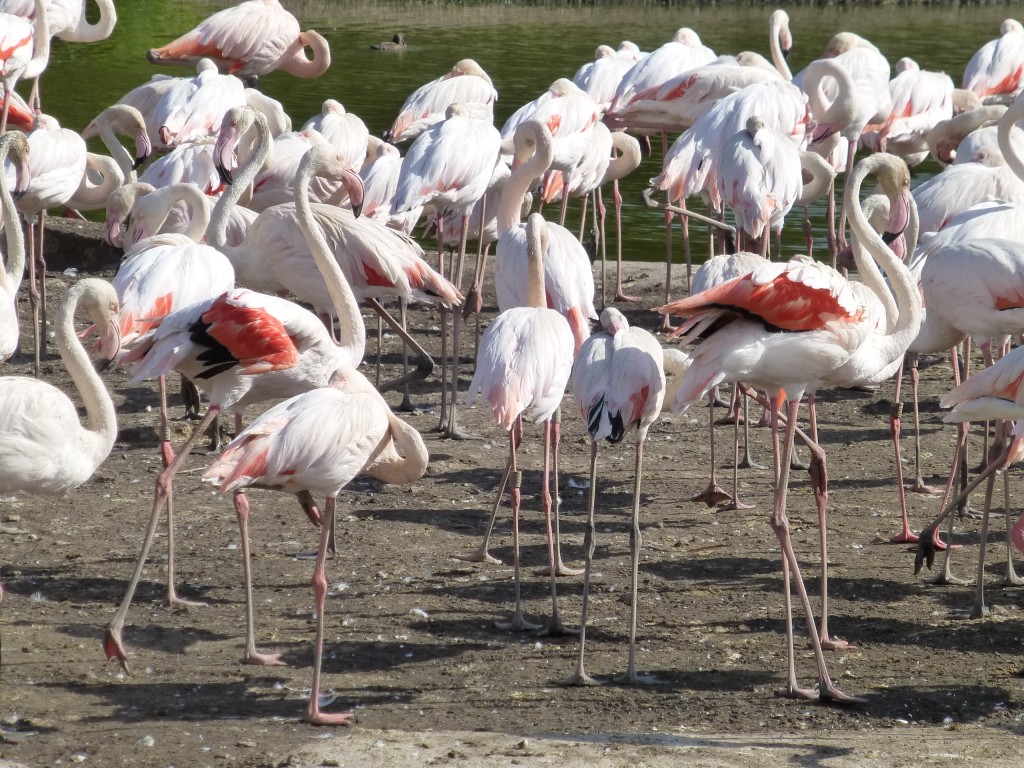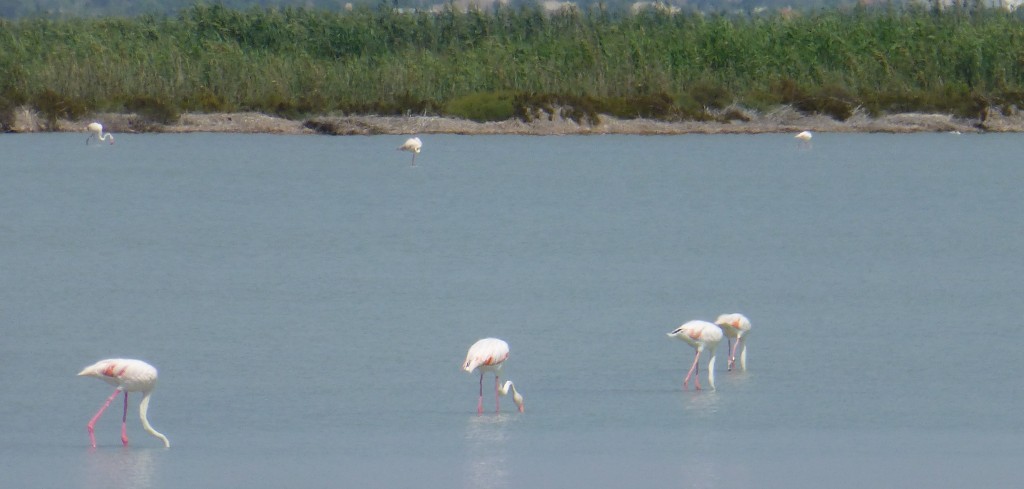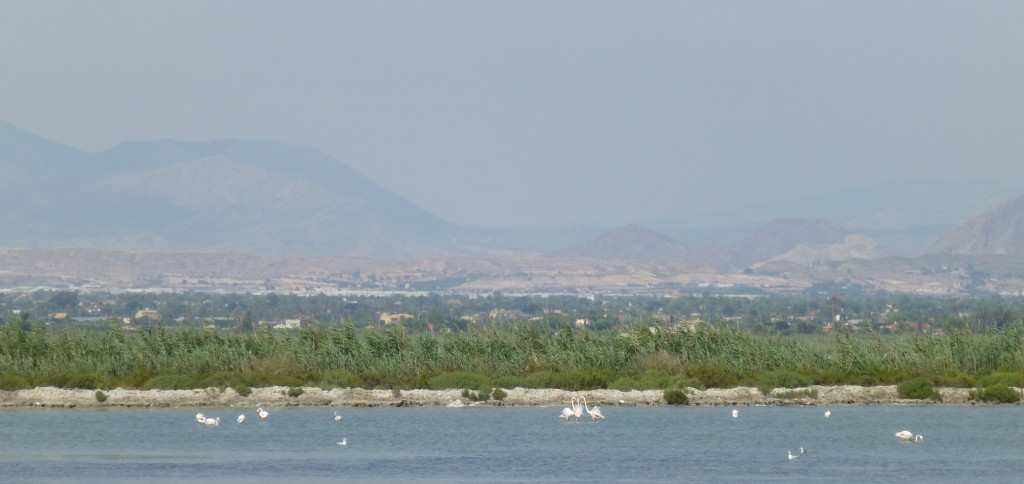Musings on flamingo behaviour, part one...
My PhD supervisor at Exeter University and I have been chatting a lot recently about wild flamingo behaviour, how to measure it and how to include some aspect of it in my research. One of the joys of places like WWT Slimbridge is that flamingos can be easy to observe; they are used to people and you can get close to them to see what they do and work out why they do it. The inaccessible nature of many flamingo habitats causes problems for biologists, however there are some places where wild flamingos are easy to spot. The east coast of Spain is one of these places where wild greater flamingos can be seen with relative ease. Indeed, rather large flocks will gather in the salt flats that adjoin some of the main roads across this region.
[yframe url='http://www.youtube.com/watch?v=LhjGdhR-5lQ&feature=youtu.be']
Last week, I travelled out there to observe the flamingos for my PhD research to see how possible it would be to record the activities of wild flamingos. The short answer to that question is tricky! However, I thought I would share some of the interesting points that I have picked up whilst trawling through photos, video and data from this holiday, sorry *cough, cough* research trip :-)

Youngsters... adults push them out. Just like I see at Slimbridge. You're not pink. Go away. Come back when you're of use. It was very interesting to see this in wild flocks. A grubby brown juvenile all alone on the edge of the group, whilst the small parties of adults (friends?) were hanging out together mooching around for food. Check out at the back of the video clip below and you will see a young bird (first or second year, still with many brown feathers) all alone. There is a biological reason for this behaviour, which I have talked about in other posts, but basically, in plain flamingo "if you're not pink you're not useful for breeding so go away unless you are pink."
[yframe url='http://www.youtube.com/watch?v=Q_6C7Re-NGc']
Feeding in pairs... some birds were banded (ringed) on their legs in a similar way to those at Slimbridge. They were hard to spot. And when the birds were wading the rings were impossible to see. BUT what I was able to notice was that, when a bird was identifiable, it did hang around with the same bird (or two) for the duration. Following around, stamping their feet in the mud together and foraging in the same place. I often seen the Slimbridge flamingos forming little breakaway parties to go and eat their pellets or, in some cases, standing and waiting for their turn to feed from the bowls when other birds have finished. The same birds do the same things together. I think these birds in Spain do the same things together too :-)

Having an argument... flamingos love to squabble. And this is one of the more visible behaviours that can be seen in the flocks of birds at WWT Slimbridge (and other centres too). Even when they have masses of space to wander about it, the birds need to be sociable and in close proximity seems to lead to flare ups of bickering and squabbling when pairs or trios invade the personal space of other birds. You only have to spend a few moments watching the Slimbridge flamingos to see that some birds win more arguments that others, and that these birds are the ones that normally "get their own way". I am sure the same thing happens in these wild flocks too...

And finally, check out the heat-haze! No wonder the birds in the UK have enjoyed summer 2013 so much. We've had a scorcher of a summer too! There will be more ramblings on behaviour and all things flamingo action in a future post.
[yframe url='http://www.youtube.com/watch?v=R5HAnUFu6mM']



